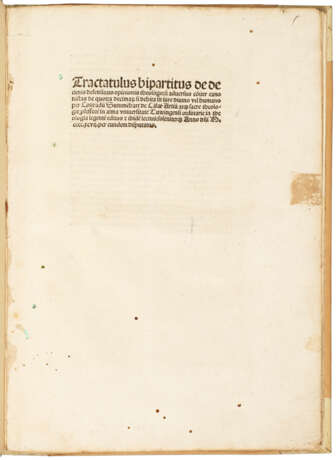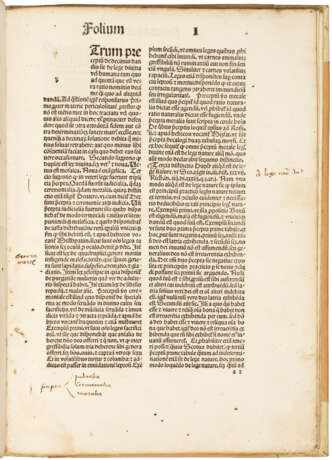ID 1236253
Lot 23 | Summenhart's Tractatulus bipartitus de decimis
Estimate value
$ 5 000 – 8 000
Rare first edition of a controversial treatise on the abolition of tithing. The author, a professor of theology at Tübingen, here argues that the practice of tithing was not based on divine law, but rather on canon law—that is, human law, and thus subject to reform and rethinking. "In questioning the divine legitimacy of mandatory tithes, Summenhart took up a social issue that resurfaced persistently in the canons of peasant grievances. But this subject … was by no means of vital interest to peasants alone. The tithe affected all strata of society and was among the key factors behind the striving for reform and Reformation which in the following years led to an increasingly volatile situation" (Oberman).
The sensitive topic and sometimes caustic nature of Summenhart's work may be why it was printed in the imperial free city of Hagenau instead of the more politically risky Tübingen. Heinrich Gran was the first printer at Hagenau. Only two complete copies are recorded sold at auction by RBH in the last 50 years. Goff S-865; BMC III 685; BSB-Ink S-649; GW M44531. For more on the text and context, see Heiko Augustinus Oberman, Masters of the Reformation: The Emergence of a New Intellectual Climate in Europe (1981).
Chancery folio (284 x 204mm). 42 leaves. (Worming, some dampstaining at ends.) Modern half vellum, remains of index tab. Provenance: occasional marginal notes and diagrams.
| Artist: | Konrad Summenhart (1450 - 1502) |
|---|---|
| Place of origin: | Germany |
| Auction house category: | Antiquarian books, Printed books |
| Artist: | Konrad Summenhart (1450 - 1502) |
|---|---|
| Place of origin: | Germany |
| Auction house category: | Antiquarian books, Printed books |
| Address of auction |
CHRISTIE'S 8 King Street, St. James's SW1Y 6QT London United Kingdom | |
|---|---|---|
| Preview |
| |
| Phone | +44 (0)20 7839 9060 | |
| Buyer Premium | see on Website | |
| Conditions of purchase | Conditions of purchase |




